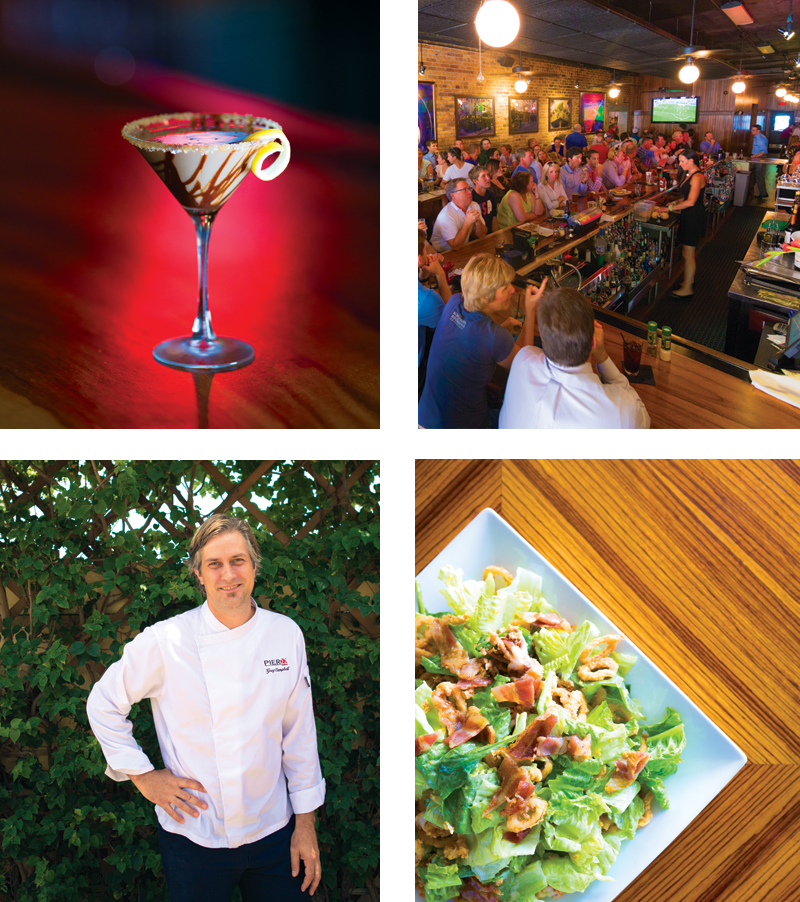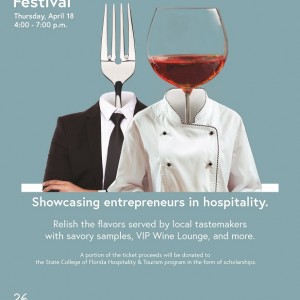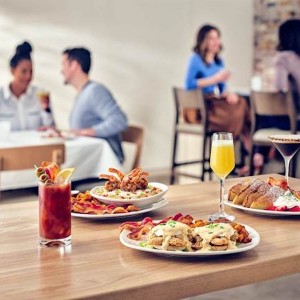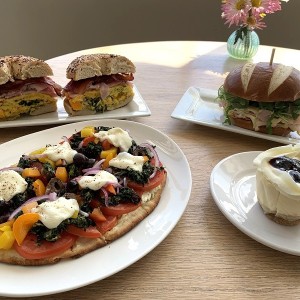There’s something appealing and innately defining about being a destination, an influence that shapes food culture, even if only provincially. In the age of celebrity chefs and highly publicized trends, this sentiment is so fundamental, particularly to large metropolitan cities, that patrons think nothing of haute cuisine in a warehouse district, farm-to-table in a converted house on the edge of town or countless other stylized odd-spots taking advantage of cheaper rent, a definitive location and separation from competition.
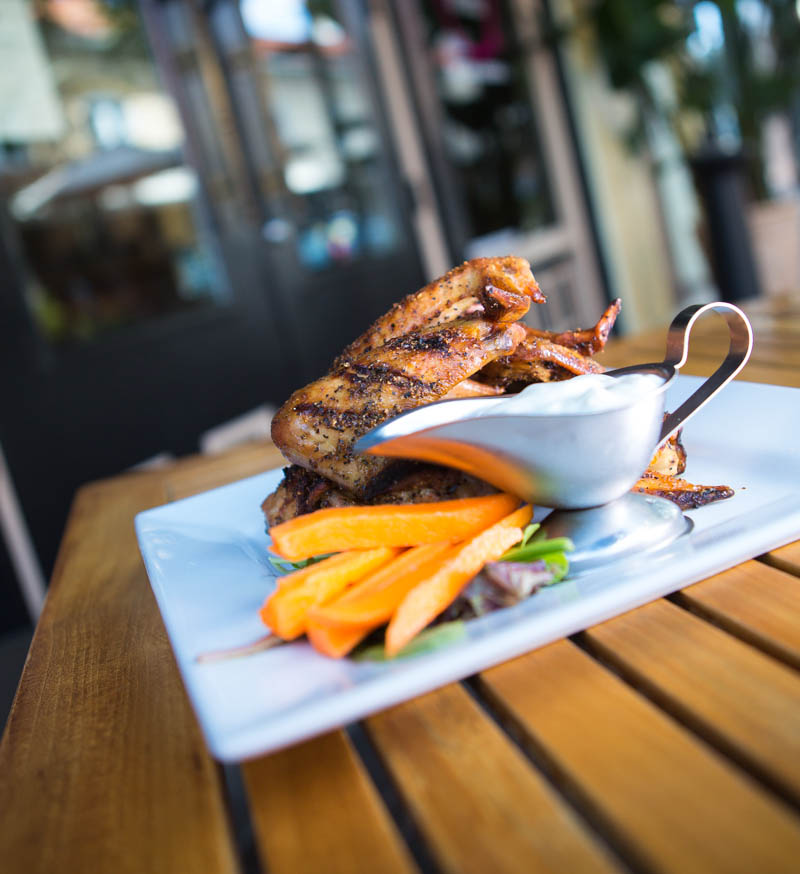
O'BRICKS DOUBLE WINGS. PHOTO BY EVAN SIGMUND.
That culinary outlier was once Bradenton, a haven for a few chefs tired of sorting through Sarasota’s blender of concentrated restaurants and clamoring seasonality. If you’re just wising up to the area, you missed its underground, in-the-know-only beginnings, but, fortunately for you, the city’s collective epicurean efforts have eased it into the burgeoning potential portion of the cycle; there’s still time to coolly ease into a bandwagon seat and settle in. Come three to five years, it might get really crowded on there.
Jutting out into the Manatee River, Pier 22 in Bradenton has a prime location. Waterside dining and sunset views, it has all the aesthetic mechanics to foster demand on its own, without the aid of buzz-worthy food. What I love about talking with its chef and marketing director Greg Campbell is that he knows this and actively rebels against it.
“It’s easy to become numb to the atmosphere where you work, to sunsets and beauty,” he says. “Some restaurants end up not trying hard. We try really hard.”
Although there isn’t a hint of accusation in his voice, his words value at the weight of indisputable truth. I haven’t met an area chef yet that procures and filets his own 80- to 100-pound whole tunas for sushi and steaks, purchases a whole slaughtered cow to provide an involved butchers menu, sends his sous chef to a fish cutting competition (he took second) and bakes every single piece of bread, including gluten free, in house. Whether or not your dish is the absolute best thing you’ve ever tasted, you can’t deny its distinct character that sums up Pier 22 more than anything.
Campbell gained his tuna knowledge in Ocean City, Maryland, from watching his neighbor, Monk, at the docks. The guy rolled his cutting board out there, drank beer and for 50 cents a pound, fileted any fish the chartermen from Baltimore brought in. How deep the fat content runs, not color, sets tuna grading, and can only be determined by plugging the fish like a biopsy—if the fat doesn’t stop ‘til three inches in, that’s good fish. Campbell ensures he only purchases top grade, handles the processing and doesn’t allow it to hit room temperature before he preps it.
He’s had the wasabi-crusted tuna on the menu since the day he got there eight years ago. He purchases high quality wasabi powder that he liberally mixes with water to give it a liquid texture and rolls the tuna filet in it, lightly dusts with flour, layers a pan with panko bread crumbs and sears all four sides like ahi tuna. He then makes a soy glaze from reduced soy sauce and sugar, drizzles it on the plate with a closely guarded peanut sauce and serves with fried rice and veggies. It’s something he’s never going to change.
Campbell’s wife’s gluten intolerance led him to examine his menu a while back and tidy up some items to offer more for that growing customer base. He has a sous chef, Felipe Silva, who grew up working in his dad’s bakeries in Mexico City and New York, and together they were confident they could devise a gluten-free pizza recipe indistinguishable from that containing regular flour.
It took close to 30 iterations, but finally they struck upon a recipe of tapioca flour, soy flour, xanthan gum, salt, liquid bases and a couple other ingredients that rose like pizza and gave them the texture and flavor they sought. Campbell calls the dough “a work of art” and recommends incorporating it with an item like the bruschetta flatbread, made with local tomatoes, olive oil, local arugula, homemade balsamic vinaigrette and fresh mozzarella made from Daiken Dairy products.
Chef and owner Dave Shiplett used to cook at the old Poseidon on Longboat Key before packing up shop for Bradenton, eventually finding his way to his downtown spot, Soma. Shiplett grew up in Bradenton in the ‘60s and ‘70s when ethnic food was virtually non-existent and the palate of dining out consisted of traditional Southern fare and the catch coming out of the fisheries. Once he hit 18, he took off for San Diego and the array of ethnic possibilities that led him to enroll in culinary school in San Francisco. That world of technique from French-schooling and heavy Asian exposure would serve him well, inspiring Shiplett to marry those processes with his roots to create what he endearingly dons “redneck fusion.”
He is like the farmer down the street with his way of creatively preserving ingredients’ seasonality through candying, saucing and pickling. His menu slowly rolls into subsequent phases with this ongoing process, but in this case it’s often paired with an enticing centerpiece that buttresses the dish. His hog snapper is a good example. It’s easy to think of the marrying of fish and onion as a risky move; both have distinct flavors, but in the funny way that culinary chemistry has, the literal melding of the two softens their potency and opens the dish to a wider, fish-cautious audience.
Shiplett slices onions extremely thin and takes cornmeal, flour, salt and pepper to a pan with a little oil and butter. He places in the bare fish, which he sources from Tampa, and, taking advantage of the natural caramelization, sears the onion to its outer layer until brown and crispy. It’s natural to envision this as a crumbly nut crust, but the sugars actually weld the onion to the flesh like skin and provide a nice textural dynamic between the flaky protein and outer layer.
He then taps into his reserve of Asian influence – mostly picked up by cooking in the homes of the foreign students out West – by complementing the fish with Mandarin fried rice. Like the States, China is spacious and regionalism is prevalent. The combination of lobster, citrus, spice and a nut, which is typically the formula representative of that food culture, is what sets off the Mandarin denotation.
He heats his pow wok, which cooks everything in a flash, and preps his ingredients. Once they hit the pan, the whole side dish will be ready in less than a minute. An admixture of garlic, ginger, sesame and regular oil go in first, quickly followed by the egg and rice to keep the liquid from burning. He’s already cubed and velvetted, or quickly fried in corn starch, the lobster tail, and he throws that in last along with the nut, usually almonds or macadamias. Once finished, he tops it all off with whatever form of orange he’s playing with and brings the rice and fish together to showcase a world of tactics on one plate.
Right down from the Bradenton courthouse, O’Bricks (named after all the bricks inside the original pub) is a pleasant anomaly. To begin, you don’t see many pub/martini bar hybrids, and the place has the vibe of a distinctive spot that unexpectedly did so well with its food it decided to attach a grill next door. Shepherd’s pie, eggplant roulade, Chilean sea bass and PEI mussels are found on the same menu as mac ‘n cheese and proud bar specialties like stuffed banana peppers—the original recipe comes from a guy owner Rick Willats knew in Hamburg, NY, and Willats promised him he’d never give the exact recipe away, but the stuffing is made from five cheeses, herbs and seasonings blended together, stuffed in the peppers and baked.
Amongst the yoyo of $25 proteins and $8 flatbreads, rests a charm that gives every dish life in a way that you know Willats and Co. didn’t just slap it on the menu. They keep health considerations in mind and devote themselves to quality and local sourcing. not something you normally see for establishments that grew out of a bar atmosphere. Take one of its calling cards – the wings.
One of the partners in the business, Mike Carter, came up with the process of marinating the whole large double wings for 24 hours in a mojo seasoning. He then slowly grills them with additional chopped garlic and pepper seasonings before taking them off and finishing them in the oven. One order comes with five double wings, a drumstick and a wing with a tip on it, and for $10, they’re a game-day hit, especially with take-out orders.





